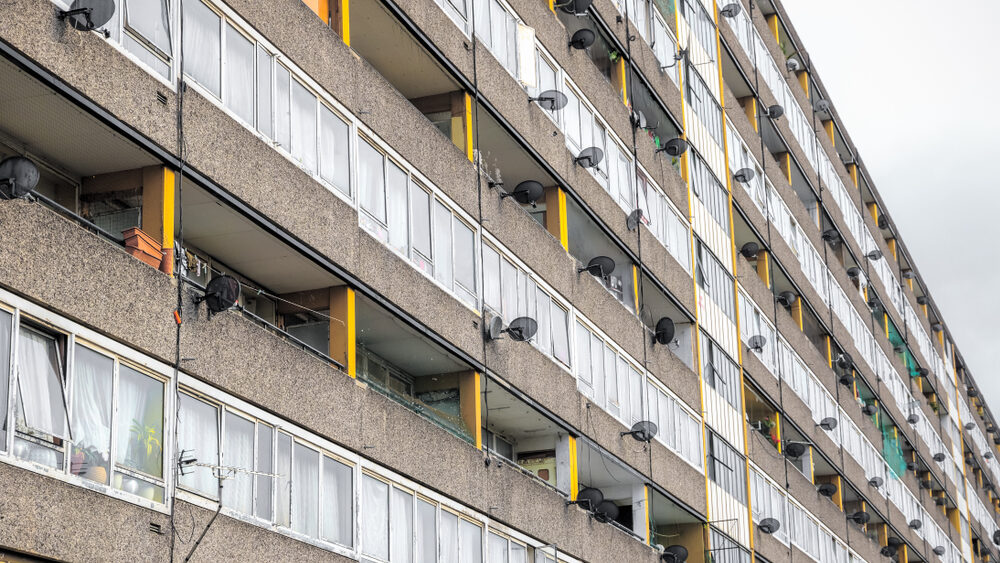UK increases vigilance in fire safety remediation for social housing
- November 29, 2023
- 8:01 am


Iain Hoey
Share this content
Fire safety remediation survey for 11-metre plus buildings
The UK government is demonstrating increased vigilance in fire safety remediation, particularly for buildings over 11 metres in height.
This commitment was emphasised in a recent correspondence issued on 28 November 2023 by Jonathan Walters, Deputy Chief Executive.
In this letter addressed to registered providers, a second survey on fire safety remediation was announced, following an initial survey that commenced on 23 August 2023.
Government’s proactive approach
The survey, set to open on 1 December 2023, requires registered providers to submit data by 31 December 2023.
This initiative, as stated by the Minister of State for Housing and Planning in a Parliament update on 16 November 2023, mandates quarterly updates on Fire Safety Remediation for all buildings over 11 metres, including those over 18 metres.
This enhanced monitoring is intended to provide assurance on the progress being made to address life safety fire risks.
Enhancements to survey methodology
The second survey introduces additional questions and clarifications, emphasizing the necessity for providers to use the most recent version of the building level spreadsheet from the NROSH+ website.
Providers are encouraged to ensure accurate and consistent responses across the Fire Risk Survey (FRS) and the building level spreadsheet, as this data plays a pivotal role in the co-regulatory settlement and influences the regulatory standards compliance of a provider.
Progress in fire safety measures
RSH findings reveal significant advancements
In a related report published on 16 November 2023, the Regulator of Social Housing (RSH) disclosed findings that reveal substantial progress in fire safety remediation within the social housing sector.
This report highlights the proactive measures taken by social landlords, including housing associations and local authorities, in addressing fire safety concerns.
Key findings from the RSH report
- Comprehensive Risk Assessments: 98% of buildings in the survey underwent fire risk assessments.
- Proactive Remediation Plans: The majority of social landlords have established plans to address life-critical fire safety defects.
- Timely Remediation: 71% of 11-18 metre buildings and 84% of buildings over 18 metres with external wall system-related Life Critical Fire Safety (LCFS) defects are either remediated or scheduled for remediation within five years.
The role of boards and councilors
The report also underlines the critical role of boards and councillors in ensuring the safety and well-being of tenants in social housing. It urges a proactive approach in ensuring compliance with legal obligations regarding building safety.
RSH’s active engagement
Will Perry, Director of Strategy at RSH, emphasised the importance of landlords understanding and managing their buildings safely, stressing the need for prompt remediation of fire and safety defects.
The RSH is actively engaging with providers, particularly those whose returns indicate potential discrepancies in the assessment or remediation of buildings.
IFSJ Comment
This advancement in fire safety remediation, particularly in the social housing sector, marks a significant step towards ensuring the safety and security of residents in high-rise buildings.
The UK government’s proactive approach, evident through the implementation of comprehensive surveys and rigorous data collection, is commendable. It not only reflects a commitment to public safety but also fosters a culture of accountability among housing providers.
The findings of the RSH report, indicating widespread compliance and proactive measures, are reassuring.
However, continuous monitoring and engagement by authorities like the RSH are crucial to maintain this momentum and address any emerging challenges.
Overall, this development signals a positive shift in prioritising fire safety in the housing sector, which is vital for the well-being of countless individuals and families residing in these structures.

